Factory Tour: Ernie Ball Music Man Part 2
Welcome to Part 2 of the Ernie Ball Factory Tour! Scroll below to continue!
View Part 1 here!

Here are some fully sanded bodies, ready to go on to finish. Every guitar in the Ernie Ball Music Man factory is made to order, based on what dealers have requested. It takes a lot of organization to build guitars this way, it requires flexibility and vision, and Music Man does a great job in that regard.

The all-important logo is silkscreened onto the headstocks at this stage.

First, the bodies get a very thin primer coat of polyurethane.

The primer coat will be sanded to remove any imperfections before the color and finish coats.
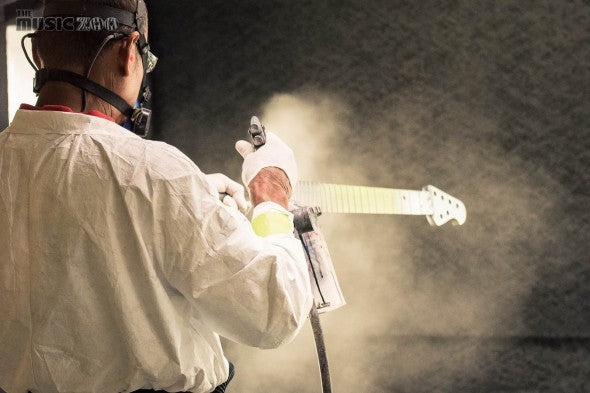
Music Man uses polyurethane for all their instruments in accordance with the local California laws. They have great painters who can lay down a thin, durable finish.

These gorgeous sunburst finishes came out great. Look at that color.
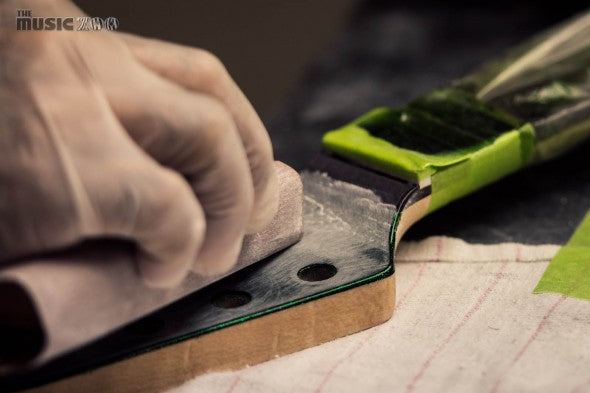
This color-matched headstock is getting some additional sanding after the painting stage. Music Man is very serious about their paint process.

These necks are silkscreened, painted, sanded, and ready to go.

This builder is taping up the side of the neck in preparation to round off the fret ends. Nobody likes a sharp fret end.

Once the fret ends have been rounded, the next step is to level the frets from end to end to prevent any buzzing or dead notes. After that, the frets will be crowned, which gives the gentle curve to each fret, making it comfortable and effortless to play.

A lot of Music Man models have some high-tech features and tone controls, which requires some high-tech solutions. The factory builds their own electronics in house. These PC boards are clamped up and ready for wiring.

Here are some pc boards after the components are wiring have been soldered on. Music Man’s prowess with electronics allows them to produce features like the Game Changer, which allows for superior pickup switching options within the guitar.

Music Man also has a machine shop where they are able to create custom metal parts for the guitars. Notice all the machine oil required for this work; the metal can overheat easily when being machine and requires constant lubrication.

The famous Stingray bass pickups as well as the MM90 pickups are wound in house. Other pickups used include the venerable Dimarzio humbuckers.
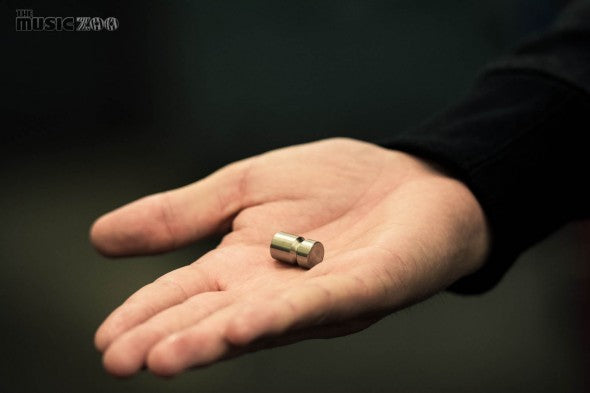
Here’s a bass bridge saddle before machining. Music Man will recieve the part this way from a supplier.

And the bass bridge saddle after getting drilled for the height adjustment and intonation screw holes.

In addition to the saddles, the machine shop was working on producing bridge plates and tremolo blocks.

Now that the bodies and necks have been painted, it’s time to buff that finish up to a brilliant shine. This body is being prepped for the process.

Meet Ursula. She is a 6-axis automatic buffing robot that was built in 2000 in conjuction with Cal Poly (who are just down the road). Ursula can pick up a body, know which side she’s looking at, buff one side, put it down, buff the other side, and even buff some of the edges. Ursula runs 24/7, and performs 90% of all the buffing work at Music Man.
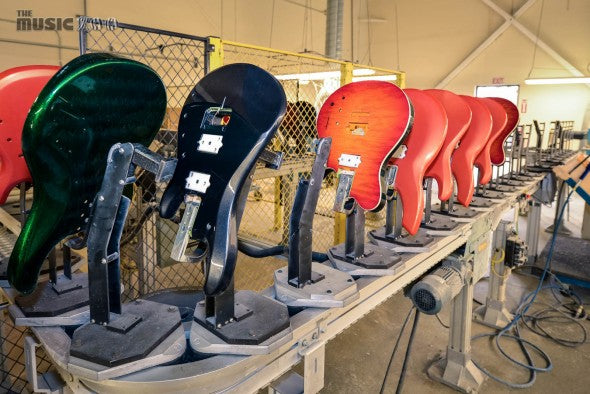
Workers load up bodies for buffing by Ursual in this queue, and then go home for the night. Ursula will tirelessly buff them all night long. If there is a problem, she sends a message to someone. in 13 years, she’s only asked for help five times. A real workhorse.

Not every nook and cranny can be buffed by the robot, however, so each body gets some personal attention at the buffing wheel by a real human.

A close-up of the builder getting the edge of the buffing wheel right into a hard-to-access spot in the neck joint area. Buffing is delicate work; it requires the right touch and pressure or else it’s possible to burn the paint and then it’s game over.

After the guitars are completely painted and buffed, they go to hang out for three days in the hot box. This super dry room is kept at 97 degrees and helps cure the poly, accelerating any potential shrinkage and helping to guarantee a flawless finish.
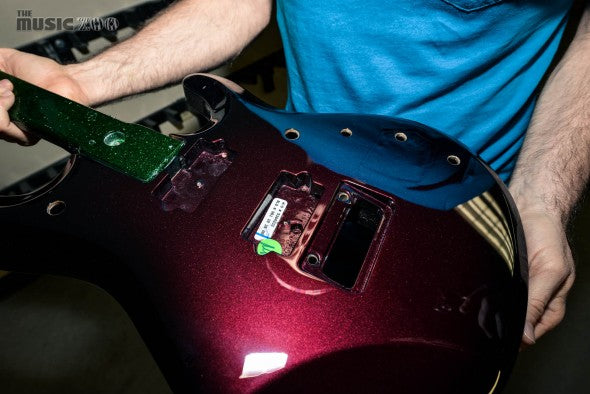
After the bodies come out of the hot box, it’s time to clean up the holes for the pots and the other hardware. Any gunk that could be in the inserts or areas where hardware needs to be attached is carfeully cleaned and drilled out.

Here you can see another body with the pickguard holes dressed, ready to get the bridge and the pickups.
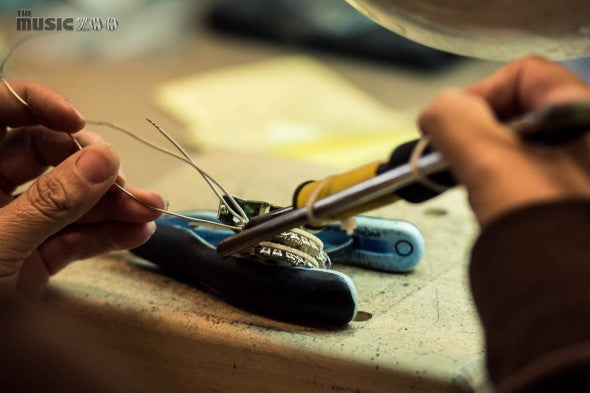
Time to start wiring some electronics together. Here’s the steady hand of a builder soldering together a pickup selector switch.

These guys need to be super precise. All the soldering is done in a very small space and some of these guitars have a lot going on in the cavity.

On the other side of the guitar, this builder is working on final setup. He’s filing the slots in the nut at the headstock end of the neck, and will then tune the guitar, do the intonation, and make sure the action is perfect.

Finally, the guitars and basses are put into their brand-new cases and boxed for shipping.

Inside the shipping department, Music Man guitars and basses ready to ship to lucky dealers (like The Music Zoo).

After all that effort from so many talented builders, it was all worth it. This John Petrucci prototype is sporting a new red sparkle finish, and it’s stunning, especially out in the sunlight of San Luis Obispo. Music Man makes some terrific guitars and basses, and The Zoo is proud to be a leading dealer. Thanks for joining us on this tour of their lovely facility, and get in touch with sales@themusiczoo.com to get started with ordering your Music Man today!






